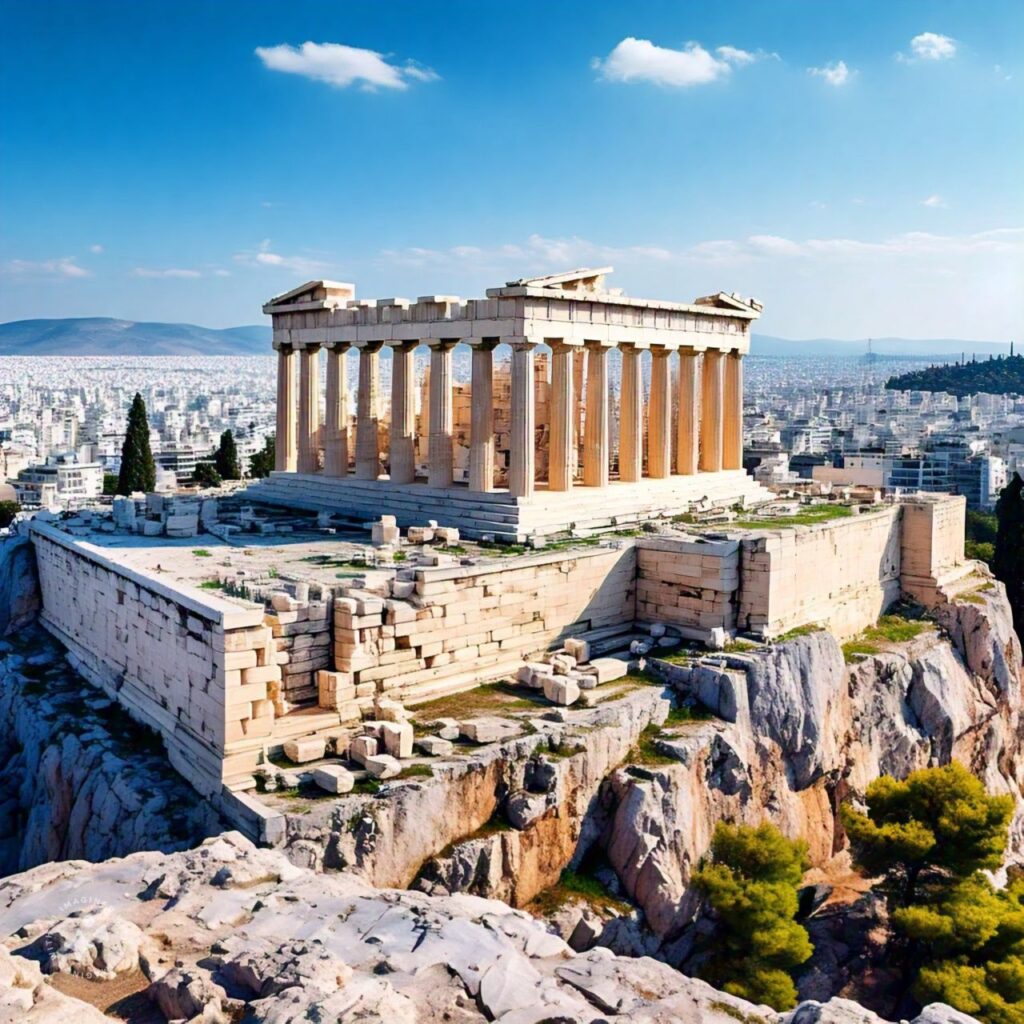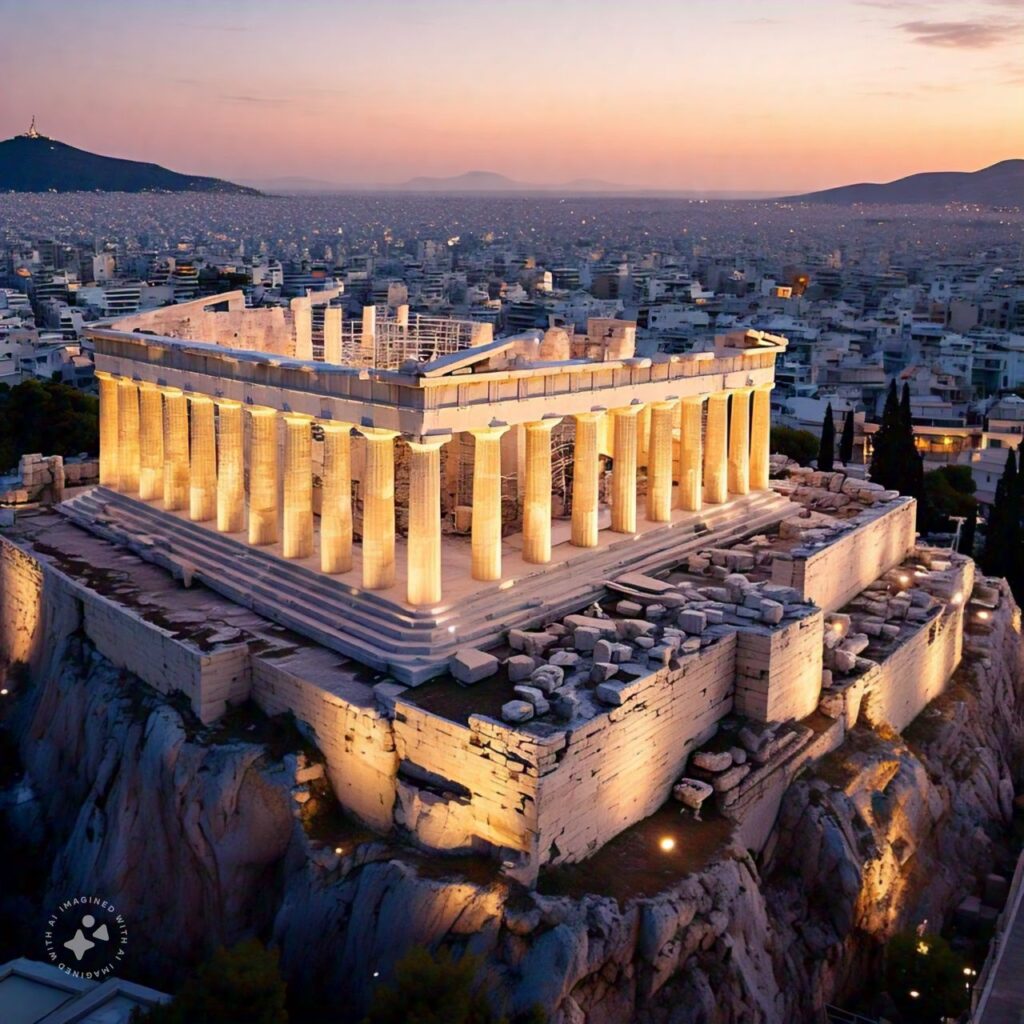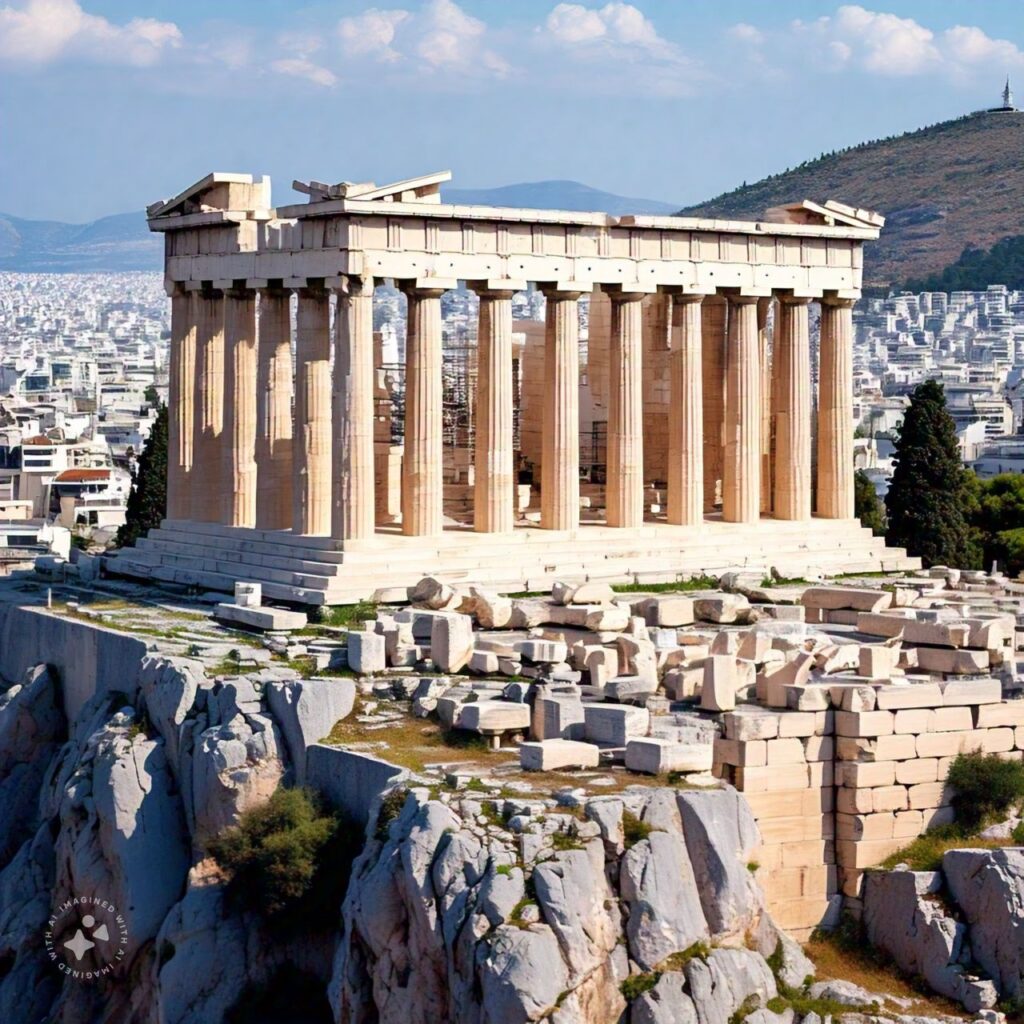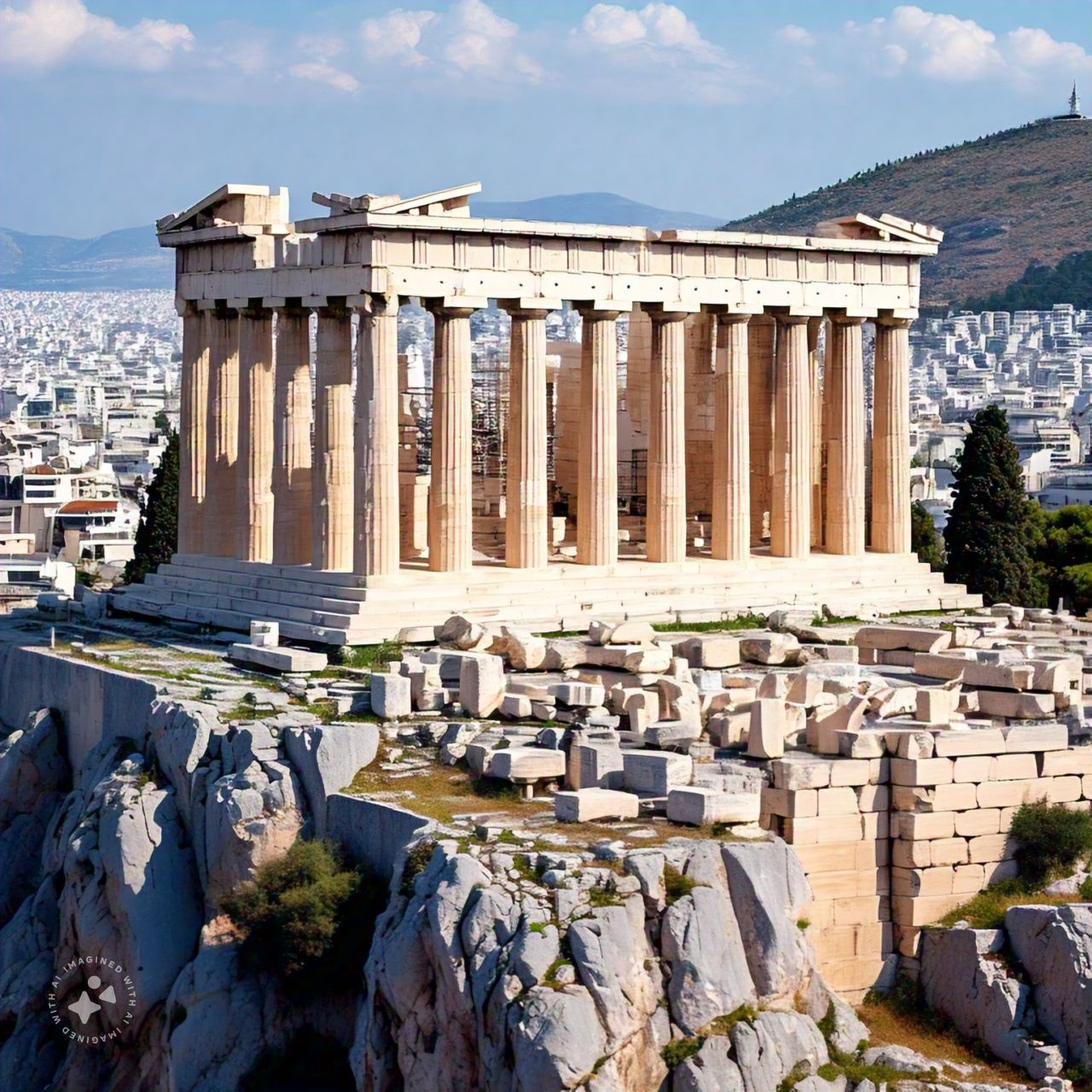Perched atop a rocky hill in the heart of modern-day Athens, the Acropolis is one of the most iconic and historically significant sites in the world. Known as the cradle of Western civilization, this ancient citadel has played a central role in the development of art, philosophy, politics, and architecture. With its monumental temples, grand structures, and rich history, the Acropolis remains a symbol of Greece’s cultural legacy and the foundation of modern Western society.
In this article, we will explore the history, architectural wonders, cultural significance, and lasting influence of the Acropolis of Athens, shedding light on why this ancient site continues to capture the imagination of people around the world.

The History of the Acropolis
The Acropolis of Athens is a hilltop fortress that has been inhabited since prehistoric times. Its earliest known settlements date back to the Neolithic period, around 6000 BCE. However, the site rose to prominence during the Classical period (5th century BCE), when it became the center of Athenian power, culture, and religious life. The term “Acropolis” itself means “high city” in Greek, referencing its strategic position above the rest of Athens.
The Rise of Athens and the Acropolis
In the 5th century BCE, Athens was undergoing a period of remarkable growth, both politically and culturally. After the Greco-Persian Wars (499-449 BCE), during which Athens played a crucial role in repelling the Persian invasion, the city entered its Golden Age, under the leadership of statesman Pericles. It was during this time that the Acropolis was transformed into an unparalleled symbol of Athenian power, religious devotion, and cultural achievement.
Under Pericles’ patronage, the Parthenon and other key buildings were constructed, making the Acropolis the architectural and artistic epicenter of ancient Greece. The city-state’s flourishing democracy, intellectual advancements, and artistic creations all found their expression in this monumental site.
Architectural Wonders of the Acropolis
The Acropolis is home to several of the most famous and influential buildings in Western architecture. These structures are not only masterpieces of Doric and Ionic styles but also embody the ideals of balance, symmetry, and harmony that defined ancient Greek art and architecture. Some of the most notable structures include:

1. The Parthenon
The Parthenon is the most iconic and well-preserved building on the Acropolis and arguably the most famous ancient structure in the world. Dedicated to the goddess Athena, the city’s patron deity, the Parthenon was built between 447 BCE and 438 BCE. Designed by the architects Iktinos and Kallikrates and adorned with sculptural masterpieces created by the sculptor Phidias, the Parthenon is a symbol of the glory and power of Athens.
The Parthenon is a Doric temple with an intricate layout and highly refined proportions. Its stunning exterior is complemented by the Parthenon Marbles, which once decorated the temple’s frieze, metopes, and pediments. These sculptures depict various mythological scenes, including the birth of Athena, the battle between the gods and the giants, and the Panathenaic procession—an important religious festival in Athens.
2. The Erechtheion
The Erechtheion is another important temple on the Acropolis, built between 421 BCE and 406 BCE. Unlike the Parthenon, which was dedicated to a single deity, the Erechtheion was dedicated to multiple gods and legends, including Athena and Poseidon, and was believed to be the site of the mythical contest between the two gods for the patronage of Athens. This temple is famous for its unique asymmetrical design, as it was built on uneven ground, and for the Caryatids—six elegantly draped female statues that replace columns to support the structure’s porch. The Erechtheion’s unusual design and religious significance make it a distinctive feature of the Acropolis.
3. The Temple of Athena Nike
The Temple of Athena Nike is a small but beautiful temple dedicated to the goddesses Athena and Nike, the goddess of victory. Built around 427 BCE, it is located on the southwestern corner of the Acropolis and is a prime example of the Ionic order of architecture. The temple is renowned for its elegance, with its delicate proportions and frieze depicting scenes of victorious battles. The Temple of Athena Nike symbolized the power and triumph of Athens, both in battle and in its democratic ideals.
4. The Propylaea
The Propylaea is the monumental gateway to the Acropolis, designed by the architect Mnesicles and constructed between 437 BCE and 432 BCE. The Propylaea marks the entrance to the sacred hill and was designed to impress visitors with its grandeur and architectural complexity. Its Doric columns and Ionic details combine to create a striking visual effect. The Propylaea also housed a small temple dedicated to the goddess Athena Nike, further reinforcing the significance of the Acropolis as a religious site.
Cultural and Religious Significance
The Acropolis was not just an architectural wonder; it was a center for religion, politics, and intellectual activity. It played a central role in Athenian life and was a focal point for worship, particularly for the goddess Athena, who represented wisdom, courage, and the ideals of the city-state. The Parthenon, as the main temple on the Acropolis, housed a massive statue of Athena created by Phidias, which was considered one of the great artistic achievements of antiquity.
The Panathenaic Festival, an important event held every four years, was one of the central religious celebrations in Athens. The festival included sacrifices, athletic competitions, and a grand procession that culminated at the Acropolis, where the people of Athens would present a newly woven robe (the Peplos) to the statue of Athena in the Parthenon. The procession was famously depicted in the Parthenon Frieze, one of the most celebrated works of ancient Greek art.
Beyond its religious importance, the Acropolis also represented the political power of Athens. The construction of the monumental temples was financed through the Delian League, a coalition of Greek city-states led by Athens. This association with the Athenian empire highlights the Acropolis as a symbol of Athenian supremacy and the city-state’s influence on the broader Greek world.

The Legacy of the Acropolis
The Acropolis of Athens has left an indelible mark on Western civilization. The concepts of democracy, philosophy, and art that flourished in ancient Athens have had a profound influence on the development of Western culture and continue to shape modern society. Philosophers such as Socrates, Plato, and Aristotle laid the foundations of Western thought, many of their ideas emerging from the intellectual environment fostered by Athens and the Acropolis.
The architectural innovations of the Acropolis, particularly the Doric and Ionic styles, served as models for later architectural developments in Rome and throughout the Western world. The Parthenon, in particular, has been admired for its mathematical precision, harmonious proportions, and symbolic grandeur.
In modern times, the Acropolis has become a symbol of democracy, intellectual freedom, and cultural heritage. It is a UNESCO World Heritage site and continues to attract millions of visitors from around the world, who come to experience its ancient beauty and reflect on the legacy of one of the world’s great civilizations.
Preservation and Challenges
Over the centuries, the Acropolis has faced numerous challenges, including invasions, earthquakes, and the ravages of time. Many of its sculptures and architectural elements have been damaged or removed, most famously by the British ambassador Lord Elgin, who took the Elgin Marbles from the Parthenon in the early 19th century. These marbles are now housed in the British Museum, but Greece has long called for their return.
Efforts to preserve the Acropolis have been ongoing, and in recent decades, extensive restoration work has been undertaken to stabilize the structures and protect them from further decay. The Acropolis Museum, which opened in 2009, offers a comprehensive view of the site’s history, displaying artifacts from the Acropolis and presenting the story of its significance in ancient Athens.
Conclusion: The Enduring Spirit of the Acropolis
The Acropolis of Athens stands as a monumental symbol of the achievements of ancient Greece and its profound influence on the development of Western civilization. From its architectural masterpieces to its cultural and philosophical legacy, the Acropolis continues to captivate the world. As both a historical and spiritual center, it reminds us of the enduring power of ideas, creativity, and democratic ideals, making it not just a relic of the past, but a beacon of human achievement for the future.
